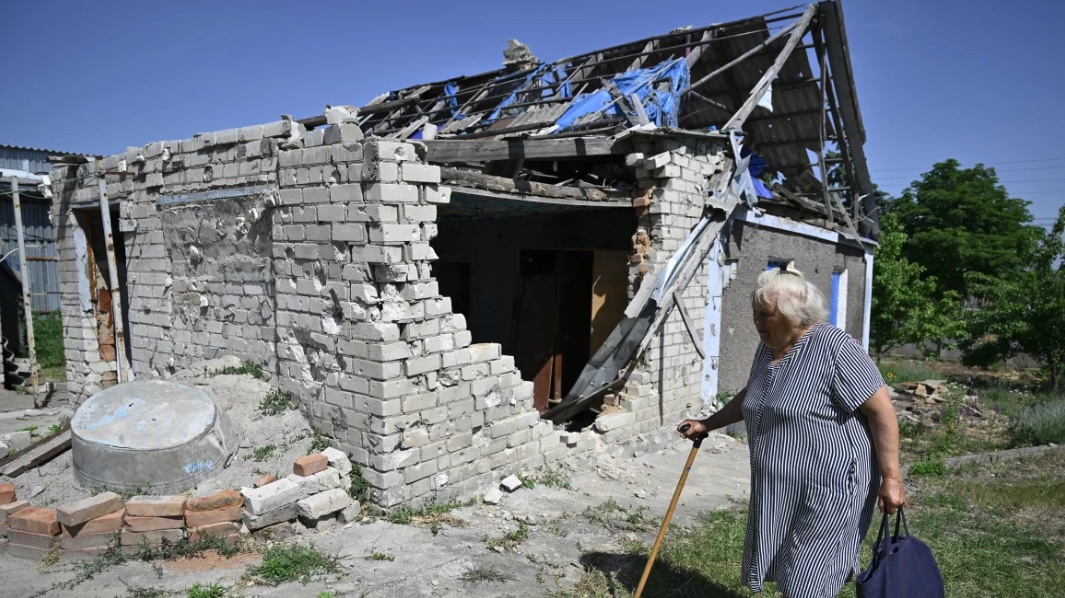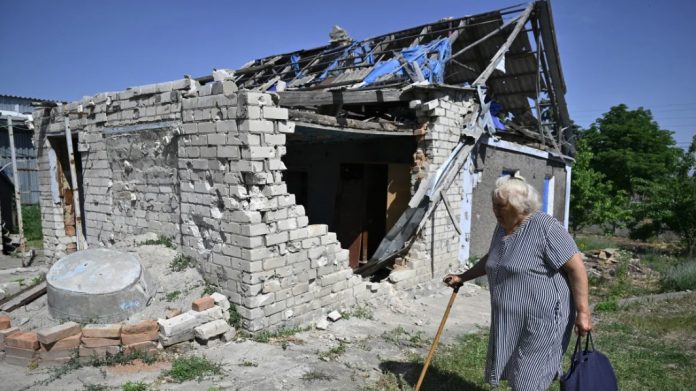ยูเครนสามารถจัดการรักษาเสถียรภาพแนวรบด้านเหนือในคาร์คิฟได้ หลังจากที่มอสโกเปิดฉากการรุกอย่างไม่คาดคิดเมื่อเดือนที่แล้ว อย่างไรก็ตาม กองกำลังของตนกำลังแผ่ขยายออกไปตามแนวแนวหน้าระยะทาง 1,000 กิโลเมตร และยังคงเสี่ยงต่อการถูกทิ้งระเบิดทางอากาศร้ายแรงของรัสเซีย เจ้าหน้าที่อาวุโสจากหน่วยรักษาความปลอดภัยของยูเครน (SBU) ซึ่งเป็นที่รู้จักในนาม Bankir และปัจจุบันมีส่วนร่วมในการสู้รบในภูมิภาคคาร์คิฟ บอกกับ CNN ว่าความสามารถในการกำหนดเป้าหมายที่มั่นของรัสเซียข้ามพรมแดนให้ผลลัพธ์ที่ดีอยู่แล้ว ตลอดช่วงความขัดแย้งส่วนใหญ่ ยูเครนถูกจำกัดการใช้อาวุธอันทรงพลังของตะวันตกต่อรัสเซีย ก่อนหน้านี้ พันธมิตรของเคียฟงดเว้นการโจมตีภายในดินแดนรัสเซียเพื่อหลีกเลี่ยงความตึงเครียดที่เพิ่มขึ้น โดยจำกัดปฏิบัติการไว้เฉพาะเป้าหมายภายในยูเครน อย่างไรก็ตาม หลังจากการรุกคาร์คิฟ ประเทศต่างๆ ในยุโรป รวมทั้งฝรั่งเศสและเยอรมนี ได้อนุญาตให้ยูเครนโจมตีเป้าหมายภายในรัสเซีย ที่โดดเด่นที่สุดคือ สหรัฐฯ อนุญาตให้ยูเครนใช้อาวุธใกล้คาร์คิฟได้
ตามคำกล่าวของ Yehor Cherniev รองประธานคณะกรรมการความมั่นคงแห่งชาติ กลาโหม และข่าวกรองของรัฐสภายูเครน ขณะนี้ระบบ HIMARS ของสหรัฐฯ กลายเป็นอาวุธหลักในการกำหนดเป้าหมายที่ตำแหน่งของรัสเซีย ด้วยเหตุนี้ รัสเซียจึงลดการใช้ระบบขีปนาวุธ S-300 และ S-400 ในภูมิภาคคาร์คิฟลง เนื่องจากภัยคุกคามจาก HIMARS อย่างไรก็ตาม ระเบิดร่อนยังคงเป็นปัญหาอยู่ เนื่องจากถูกทิ้งลงมาจากระดับความสูงที่เกินกว่าแนวรับของยูเครนจะเอื้อมถึง แม้ว่าการรุกคืบของรัสเซียจะชะลอตัวลง แต่ทั้งสหรัฐฯ และยูเครนต่างรับทราบถึงแรงกดดันอย่างต่อเนื่องในแนวหน้าใหม่ในภาคเหนือ โดยเฉพาะในหมู่บ้านฮลีโบเก การยึดอำนาจที่นั่นสามารถผลักดันไปสู่ Lyptsi ทำให้คาร์คิฟอยู่ในระยะปืนใหญ่
ทางตอนเหนือของคาร์คิฟ กองกำลังรัสเซียเข้ายึดวอฟชานสค์และกำลังสู้รบอย่างใกล้ชิด นาซาร์ โวโลชายน์ โฆษกกองทัพยูเครนรายงาน UN HRMMU ตั้งข้อสังเกตว่าพลเรือนเสียชีวิตเพิ่มขึ้น 31% ในเดือนพฤษภาคม โดยเฉพาะอย่างยิ่งในแนวรบด้านเหนือใหม่เนื่องจากการโจมตีทางอากาศ เพื่อตอบโต้ ยูเครนจึงโอนทรัพยากรจากโดเนตสค์และลูฮันสค์ ในโดเนตสค์ รัสเซียตั้งเป้าไปที่ชาซิฟ ยาร์ ซึ่งกำลังรุกคืบ ไกลออกไปทางใต้ ใกล้กับ Avdiivka ซึ่งถูกยึดเมื่อเดือนกุมภาพันธ์ กองทหารรัสเซียตั้งเป้าที่จะใช้ประโยชน์จากเงื่อนไขที่เอื้ออำนวยสำหรับการปฏิบัติการภาคพื้นดินก่อนที่อาวุธของยูเครนจะมาถึง เครื่องบิน F16 ของ NATO และเครื่องบินขับไล่ Mirage 2000-5 ของฝรั่งเศสกำลังเข้ามา บ่งชี้ว่าตะวันตกได้รับการสนับสนุนเพิ่มขึ้นและมีศักยภาพในการเสริมกำลังทางทหารของยูเครน
Ukraine stabilises its northern region following an unexpected Russian advance but encounters renewed challenges in the eastern front.

Ukraine has managed to stabilise the northern front in Kharkiv after a surprise offensive launched by Moscow a month ago. However, its forces are now stretched thin along the 1,000km (620 miles) front line and remain vulnerable to Russia’s deadly aerial glide bombs. A senior officer from Ukraine’s Security Service (SBU), known by the call sign Bankir and currently engaged in combat in the Kharkiv region, informed CNN that the ability to target Russian positions across the border has already yielded positive results. Throughout much of the conflict, Ukraine has been restricted in its use of powerful Western weaponry against Russia. Previously, Kyiv’s allies refrained from striking within Russian territory to avoid escalating tensions, limiting operations to targets within Ukraine. However, after the Kharkiv offensive, European nations, including France and Germany, authorised Ukraine to engage targets within Russia. Most notably, the United States granted permission for Ukraine to use its weaponry near Kharkiv.
According to Yehor Cherniev, deputy chairman of the Ukrainian Parliament’s Committee on National Security, Defence, and Intelligence, the US HIMARS system is now the primary weapon for targeting Russian positions. Consequently, the Russians have scaled back their use of S-300 and S-400 missile systems in the Kharkiv region due to the HIMARS threat. However, glide bombs remain problematic as they are dropped from altitudes beyond Ukrainian defences’ reach. Although the Russian advance has slowed, both the US and Ukraine acknowledge ongoing pressure along the new front line in the north, particularly in the village of Hlyboke. Seizing control there could enable a push towards Lyptsi, bringing Kharkiv within artillery range.
North of Kharkiv, Russian forces hold Vovchansk, engaging in close combat, reports Nazar Voloshyn, a Ukrainian military spokesman. UN HRMMU notes a 31% rise in civilian casualties in May, primarily in the new northern front due to airstrikes. To counter, Ukraine diverts resources from Donetsk and Luhansk. In Donetsk, Russia targets Chasiv Yar, making advances. Further south, near Avdiivka, captured in February, Russian troops aim to exploit favourable conditions for ground operations before more Ukrainian arms arrive. NATO F16s and French Mirage 2000-5 jets are incoming, indicating increased Western support and potential for Ukrainian military reinforcement.
By CNN NEWS

















